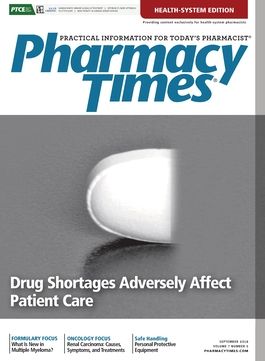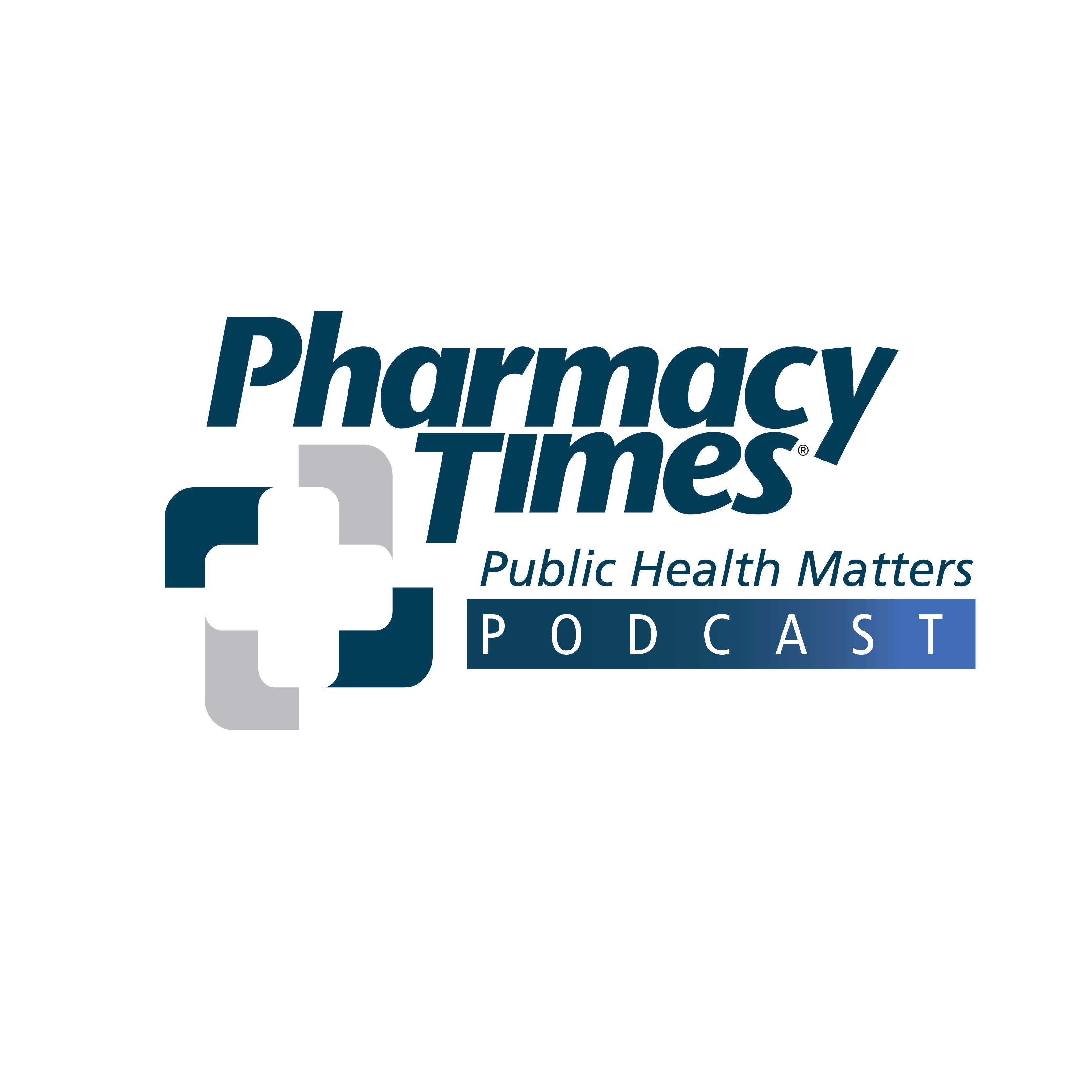Publication
Article
Pharmacy Practice in Focus: Health Systems
Community-Acquired Pneumonia: Opportunities for Generalist Stewardship Pharmacists
Author(s):
Community-acquired pneumonia is a common infection and a leading cause of morbidity and mortality worldwide.
Community-acquired pneumonia (CAP) is a common infection and a leading cause of morbidity and mortality worldwide.1
CAP is caused mostly by viruses and bacteria, with Streptococcus pneumoniae being the most common, followed by others such as Haemophilus influenzae and atypical bacteria.2 Several antibiotic stewardship opportunities are available for pharmacists in the management of CAP.
Infectious Diseases Society of America (IDSA) guidelines for CAP recommend either doxycycline or a macrolide for outpatients without risk factors for drug-resistant S pneumoniae (DRSP).3
For outpatients with local macrolide resistance >25% or risk factors for DRSP (presence of comorbidities, diabetes mellitus, alcoholism, malignancies, asplenia, immunosuppressing conditions, use of immunosuppressing drugs, use of antimicrobials within the previous 3 months, and/or old age) and inpatients not admitted to the intensive care unit (ICU), a respiratory fluoroquinolone (levofloxacin and moxifloxacin) or a combination of a β-lactam (aminopenicillin or second- or third-generation cephalosporins) and either doxycycline or a macrolide is recommended. Patients with corrected QT (QTc) prolongation should receive doxycycline because it is the primary option for atypical bacteria that do not prolong QTc, and it seems to be neutral in terms of increasing risk to Clostridium difficile infection, unlike fluoroquinolones and macrolides.4 For ICU inpatients, a β-lactam with either azithromycin or levofloxacin is recommended. Antibiotics active against methicillin-resistant Staphylococcus aureus (MRSA) and Pseudomonas aeruginosa are not needed in most patients. Therefore, an assessment of risk factors is needed to reduce inappropriate use and microbial resistance. However, if MRSA is present, linezolid or vancomycin can be added, while patients with risk factors for P aeruginosa should be treated with an antipseudomonal/antipneumococcal β-lactams (cefepime, imipenem, meropenem, or piperacillin-tazobactam) with one of the following regimens: aminoglycoside and azithromycin, aminoglycoside and levofloxacin, or ciprofloxacin or levofloxacin. In general, fluoroquinolones should be avoided because of several recent warnings of adverse events.3
CAP is one of the primary infections for which implementing a facility-specific clinical practice protocol for its management is strongly recommended.5 Prospective audits with intervention and feedback to prescribers can enhance adherence to guidelines and reduce overall antibiotic use, length of hospital stay (LOS), and duration of therapy (DOT) without compromising clinical outcomes.6-11 Switching from intravenous to oral antibiotics in clinically stable patients is an important target for improving clinical outcomes and cost. A meta-analysis of randomized controlled trials (RCTs) of patients with CAP who switched early to oral antibiotics showed no difference in clinical outcomes but reduced LOS and adverse drug events.12 In terms of CAP prevention, pharmacists can contribute mainly by promoting influenza and pneumococcal vaccinations.
Because CAP requires empiric antimicrobial therapy, adherence to guidelines and de-escalation are major antibiotic stewardship opportunities. Several observational studies found no association of de-escalation with increased mortality, clinical failure, or increased LOS.13-16 Other studies observed that concordance with recommended antimicrobial therapy by guidelines is associated with lower mortality and lower LOS and DOT.17-19 Unfortunately, unnecessary continuation of antimicrobial therapy for CAP is a common practice.2 Shortening DOT is another key intervention that can reduce adverse reactions, antimicrobial resistance, cost, and LOS.20,21 The IDSA guidelines recommend a minimum duration of antibiotic therapy of 5 days if the patient is afebrile for 48 to 72 hours and has no more than 1 CAP-associated sign of clinical instability.3 Several RCTs and meta-analyses of RCTs did not demonstrate any difference in clinical outcomes in patients treated with long versus short antibiotic courses.22-24 Procalcitonin can assist pharmacists in deciding on earlier discontinuation of antibiotic therapy.5 Nasal screening of MRSA can be a useful tool to avoid unnecessary empiric therapy for MRSA in patients with CAP who are not colonized with MRSA.25 Urine antigen tests can be used to de-escalate to targeted antibiotics for S pneumoniae and Legionella pneumophila serogroup A.3 Anti-influenza agents should be removed as soon the patient with CAP has a negative influenza test.
Optimization of antibiotic dosing and the prevention of drug—drug interactions are additional opportunities for pharmacists. For example, high doses of amoxicillin and co-amoxiclav (1 g q8g and 2 g every 12 hours, respectively) should be used, as they can overcome some penicillin-resistant S pneumoniae strains.3 Chelation of fluoroquinolones and doxycycline with divalent and trivalent cations can occur if coadministered around the same time. Therefore, pharmacists should counsel patients and health care providers to separate time of administration, particularly when several preparations of these cations are OTC.
Khalid Eljaaly, PharmD, MS, BCPS, is an assistant professor and infectious disease pharmacist at King Abdulaziz University in Saudi Arabia and an honorary research fellow at the College of Pharmacy at the University of Arizona Health Sciences in Tucson. He is a member of the social media committees of both the Infectious Diseases Practice and Research Network of the American College of Clinical Pharmacy and the Society of Infectious Diseases Pharmacists (SIDP). In addition, he is a member of the editorial advisory board of Contagion®, a member of the Saudi Arabia Ministry of Health antibiotic stewardship project (ASP) implementation team, and a member of the ASP committee of SIDP.
References
- Lee JS, Giesler DL, Gellad WF, Fine MJ. Antibiotic therapy for adults hospitalized with community-acquired pneumonia: a systematic review. JAMA. 2016;315(6):593-602. doi: 10.1001/jama.2016.0115.
- Mandell LA. Community-acquired pneumonia: an overview. Postgrad Med. 2015;127(6):607-615. doi: 10.1080/00325481.2015.1074030.
- Mandell LA, Wunderink RG, Anzueto A, et al; Infectious Diseases Society of America, American Thoracic Society. Infectious Diseases Society of America/American Thoracic Society consensus guidelines on the management of community-acquired pneumonia in adults. Clin Infect Dis. 2007;44(suppl 2):S27-S72. doi: 10.1086/511159.
- Di Bella S, Taglietti F, Petrosillo N. Are there reasons to prefer tetracyclines to macrolides in older patients with community-acquired pneumonia? Antimicrob Agents Chemother. 2013;57(8):4093. doi: 10.1128/AAC.00828-13.
- Yamana H, Matsui H, Tagami T, Hirashima J, Fushimi K, Yasunaga H. De-escalation versus continuation of empirical antimicrobial therapy in community-acquired pneumonia. J Infect. 2016;73(4):314-325. doi: 10.1016/j.jinf.2016.07.001.
- McIntosh KA, Maxwell DJ, Pulver LK, et al. A quality improvement initiative to improve adherence to national guidelines for empiric management of community-acquired pneumonia in emergency departments. Int J Qual Health Care. 2011;23(2):142-150. doi: 10.1093/intqhc/mzq077.
- Høgli JU, Garcia BH, Skjold F, Skogen V, Smabrekke L. An audit and feedback intervention study increased adherence to antibiotic prescribing guidelines at a Norwegian hospital. BMC Infect Dis. 2016;16:96. doi: 10.1186/s12879-016-1426-1.
- Halpape K, Sulz L, Schuster B, Taylor R. Audit and Feedback-Focused approach to Evidence-based Care in Treating patients with pneumonia in hospital (AFFECT study). Can J Hosp Pharm. 2014;67(1):17-27.
- Avdic E, Cushinotto LA, Hughes AH, et al. Impact of an antimicrobial stewardship intervention on shortening the duration of therapy for community-acquired pneumonia. Clin Infect Dis. 2012;54(11):1581-1587. doi: 10.1093/cid/cis242.
- Marcos PJ, Restrepo MI, Sanjuàn P, Ferreira-Gonzalez L, Verea-Hernando H. Community-acquired pneumonia team decreases length of stay in hospitalized, low-risk patients with pneumonia. Hosp Pract (1995). 2013;41(3):7-14. doi: 10.3810/hp.2013.08.1063.
- Carratalà J, Garcia-Vidal C, Ortega L, et al. Effect of a 3-step critical pathway to reduce duration of intravenous antibiotic therapy and length of stay in community-acquired pneumonia: a randomized controlled trial. Arch Intern Med. 2012;172(12):922-928. doi: 10.1001/archinternmed.2012.1690.
- Opmeer BC, El Moussaoui R, Bossuyt PM, Speelman P, Prins JM, de Borgie CA. Costs associated with shorter duration of antibiotic therapy in hospitalized patients with mild-to-moderate severe community-acquired pneumonia. J Antimicrob Chemother. 2007;60(5):1131-1136. doi: 10.1093/jac/dkm313.
- Khasawneh FA, Karim A, Mahmood T, Ahmed S, Jaffri SF, Mehmood M. Safety and feasibility of antibiotic de-escalation in bacteremic pneumonia. Infect Drug Resist. 2014;7:177-182. doi: 10.2147/IDR.S65928.
- Carugati M, Franzetti F, Wiemken T, et al. De-escalation therapy among bacteraemic patients with community-acquired pneumonia. Clin Microbiol Infect. 2015;21(10):936.e11-8. doi: 10.1016/j.cmi.2015.06.015.
- Viasus D, Simonetti AF, Garcia-Vidal C, Niubo J, Dorca J, Carratala J. Impact of antibiotic de-escalation on clinical outcomes in community-acquired pneumococcal pneumonia. J Antimicrob Chemother. 2017;72(2):547-553. doi: 10.1093/jac/dkw441.
- Guillemot D, Carbon C, Balkau B, et al. Low dosage and long treatment duration of β-lactam: risk factors for carriage of penicillin-resistant Streptococcus pneumoniae. JAMA. 1998;279(5):365-370.
- Mortensen EM, Restrepo M, Anzueto A, et al. Effects of guideline concordant antimicrobial therapy on mortality among patients with community-acquired pneumonia. Am J Med. 2004;117(10):726-731. doi: 10.1016/j.amjmed.2004.06.028.
- McCabe C, Kirchner C, Zhang H, Daley J, Fisman DN. Guideline-concordant therapy and reduced mortality and length of stay in adults with community-acquired pneumonia: playing by the rules. Arch Intern Med. 2009;169(16):1525-1531. doi: 10.1001/archinternmed.2009.259.
- Frei CR, Attridge RT, Mortensen EM, et al. Guideline-concordant antibiotic use and survival among patients with community-acquired pneumonia admitted to the intensive care unit. Clin Ther. 2010;32(2):293-299. doi: 10.1016/j.clinthera.2010.02.006.
- Li JZ, Winston LG, Moore DH, Bent S. Efficacy of short-course antibiotic regimens for community-acquired pneumonia: a meta-analysis. Am J Med. 2007;120(9):783-790. doi: 10.1016/j.amjmed.2007.04.023.
- Dimopoulos G, Matthaiou DK, Karageorgopoulos DE, Grammatikos AP, Athanassa Z, Falagas ME. Short- versus long-course antibacterial therapy for community-acquired pneumonia: a meta-analysis. Drugs. 2008;68(13):1841-1854.
- Uranga A, España PP, Bilbao A, et al. Duration of antibiotic treatment in community-acquired pneumonia: a multicenter randomized clinical trial. JAMA Intern Med. 2016;176(9):1257-1265. doi: 10.1001/jamainternmed.2016.3633.
- Barlam TF, Cosgrove SE, Abbo LM, et al. Implementing an antibiotic stewardship program: guidelines by the Infectious Diseases Society of America and the Society for Healthcare Epidemiology of America. Clin Infect Dis. 2016;62(10):e51-e77. doi: 10.1093/cid/ciw118.
- Parente DM, Cunha CB, Mylonakis E, Timbrook TT. The clinical utility of methicillin-resistant staphylococcus aureus (MRSA) nasal screening to rule out MRSA pneumonia: a diagnostic meta-analysis with antimicrobial stewardship implications. Clin Infect Dis. 2018;67(1):1-7. doi: 10.1093/cid/ciy024.
- Athanassa Z, Makris G, Dimopoulos G, Falagas ME. Early switch to oral treatment in patients with moderate to severe community-acquired pneumonia: a meta-analysis. Drugs. 2008;68(17):2469-2481. doi: 10.2165/0003495-200868170-00005.

Newsletter
Stay informed on drug updates, treatment guidelines, and pharmacy practice trends—subscribe to Pharmacy Times for weekly clinical insights.






